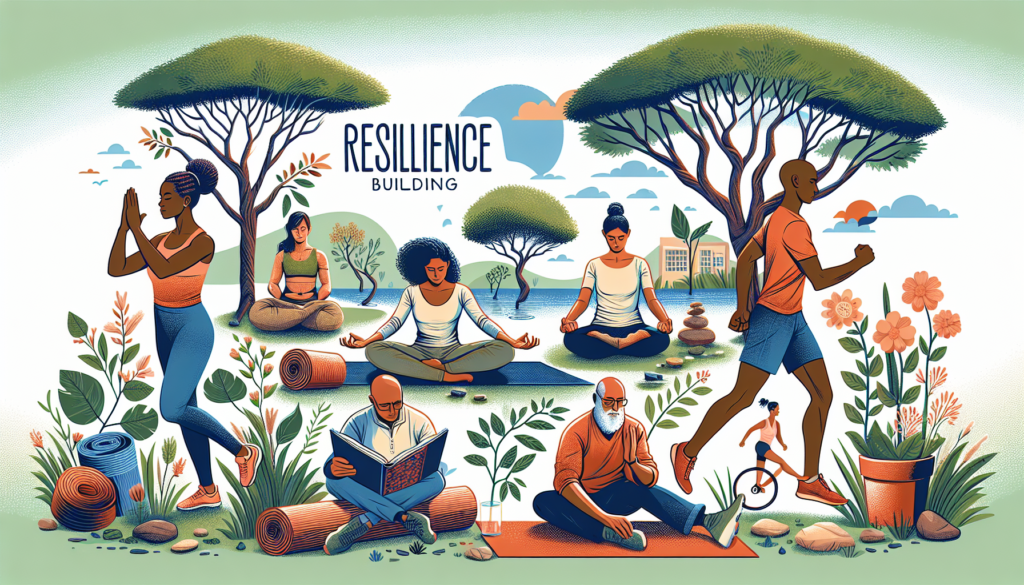Cultivating Positivity: The Art of Nurturing a Positive Mindset
Welcome to a journey into the realm of positivity, where the power of optimism and hope shines bright. In a world filled with challenges and uncertainties, cultivating positivity is not just a luxury but a necessity. It is about fostering a mindset that sees the glass as half full, embracing a can-do attitude, and seeking out the silver linings in every situation. Join us as we delve deep into the art of cultivating positivity, exploring its various facets, benefits, and practical strategies.
The Science Behind Positivity
Positivity is not just a fleeting emotion; it is a powerful force that can shape our thoughts, emotions, and actions. Research in the field of positive psychology has shown that cultivating positivity can lead to a range of physical and mental health benefits. Studies have linked a positive mindset to lower levels of stress, reduced risk of heart disease, improved immune function, and increased resilience in the face of adversity.
One of the key concepts in positive psychology is the idea of “positivity ratio,” which suggests that for every negative experience, we need at least three positive experiences to maintain a sense of well-being. This highlights the importance of cultivating positivity in our daily lives to counterbalance the inevitable challenges and setbacks we encounter.
The Power of Positive Thinking
Positive thinking is at the core of cultivating positivity. It involves reframing negative thoughts and beliefs into more optimistic and constructive ones. By practicing positive thinking, we can train our minds to focus on solutions rather than problems, opportunities rather than obstacles, and strengths rather than weaknesses.
Positive thinking is not about ignoring reality or denying the existence of difficulties; instead, it is about approaching challenges with a proactive and hopeful mindset. Studies have shown that individuals who engage in positive thinking tend to have lower levels of stress, higher levels of self-esteem, and better overall mental health.
Gratitude and Mindfulness
Gratitude and mindfulness are powerful practices that can help cultivate positivity in our lives. Gratitude involves recognizing and appreciating the good things we have, whether big or small. By cultivating a sense of gratitude, we can shift our focus from what is lacking to what is abundant in our lives, fostering a sense of contentment and joy.
Mindfulness, on the other hand, involves being fully present in the moment, observing our thoughts and feelings without judgment. By practicing mindfulness, we can cultivate a sense of inner peace and calm, allowing us to navigate life’s ups and downs with equanimity.
Building Positive Relationships
Our relationships play a crucial role in shaping our positivity levels. Surrounding ourselves with supportive and uplifting individuals can have a profound impact on our well-being. Positive relationships provide a source of comfort, encouragement, and joy, helping us navigate life’s challenges with resilience and optimism.
On the flip side, toxic relationships can drain our energy and dampen our spirits. It is essential to cultivate boundaries and prioritize relationships that uplift and inspire us. By fostering positive relationships, we can create a supportive network that fuels our positivity and enhances our overall quality of life.
Practicing Self-Compassion
Self-compassion is an essential ingredient in cultivating positivity. It involves treating ourselves with kindness, understanding, and acceptance, especially in times of struggle or failure. By practicing self-compassion, we can cultivate a sense of inner kindness and resilience, allowing us to bounce back from setbacks and challenges with grace.
Self-compassion is not about self-indulgence or self-pity; it is about recognizing our humanity and imperfections with compassion and empathy. Studies have shown that individuals who practice self-compassion tend to have higher levels of self-esteem, lower levels of anxiety and depression, and greater overall well-being.
The Role of Positive Affirmations
Positive affirmations are powerful tools that can help rewire our brains for positivity. By repeating positive statements about ourselves and our lives, we can counteract negative self-talk and cultivate a more optimistic and empowering mindset. Positive affirmations can help boost our self-confidence, enhance our self-esteem, and foster a sense of self-belief and resilience.
When using positive affirmations, it is essential to choose statements that resonate with us personally and align with our values and goals. By incorporating positive affirmations into our daily routine, we can gradually reprogram our subconscious mind for positivity and success.
Setting Realistic Goals
Setting realistic goals is another crucial aspect of cultivating positivity. Goals give us a sense of purpose, direction, and motivation, fueling our optimism and drive. When setting goals, it is essential to be specific, measurable, achievable, relevant, and time-bound (SMART). By breaking down our goals into manageable steps and celebrating our progress along the way, we can build momentum and confidence in our ability to succeed.
It is also important to be flexible and adaptive in our goal-setting process, recognizing that setbacks and detours are a natural part of the journey. By approaching our goals with a growth mindset and a positive attitude, we can navigate challenges with resilience and creativity, ultimately achieving our desired outcomes.
Expert Opinions on Cultivating Positivity
According to renowned psychologist Martin Seligman, the founder of positive psychology, cultivating positivity is key to building a fulfilling and meaningful life. Seligman emphasizes the importance of focusing on our strengths, values, and virtues to enhance our well-being and happiness.
Psychologist Barbara Fredrickson, known for her “broaden-and-build” theory of positive emotions, highlights the transformative power of positive emotions in expanding our awareness, creativity, and resilience. Fredrickson argues that positivity broadens our perspective, allowing us to see more possibilities and solutions in any given situation.
Common Misconceptions about Cultivating Positivity
One common misconception about cultivating positivity is that it involves denying or suppressing negative emotions. In reality, cultivating positivity is about embracing a balanced approach to emotions, acknowledging both the positive and negative aspects of our experiences. By allowing ourselves to feel and process negative emotions, we can cultivate a deeper sense of authenticity and resilience.
Another misconception is that positivity is a fixed trait that some people are born with, while others are not. In truth, positivity is a skill that can be developed and nurtured through practice and intention. By incorporating positive habits and mindset shifts into our daily lives, we can cultivate positivity and reap its numerous benefits.
Conclusion
In conclusion, cultivating positivity is a transformative practice that can enhance our well-being, resilience, and overall quality of life. By embracing positive thinking, gratitude, mindfulness, building positive relationships, practicing self-compassion, using positive affirmations, setting realistic goals, and seeking expert guidance, we can cultivate a powerful mindset of optimism and hope.
As we navigate the ups and downs of life, let us remember that positivity is not just a fleeting emotion but a guiding philosophy that can illuminate our path forward. By nurturing a positive mindset and embracing the power of optimism, we can create a brighter, more fulfilling future for ourselves and those around us. So, let us embark on this journey of cultivating positivity with courage, curiosity, and compassion, knowing that each step we take brings us closer to a life filled with joy, meaning, and purpose.


